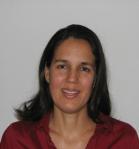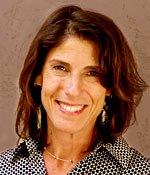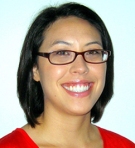Q: As a non-US scholar, it’s often difficult to “sell” your research on countries other than the U.S. to U.S. scholars & journals. What kind of advice would you have in getting non-U.S. research in U.S. journals?
 Florencia Torche, New York University
Florencia Torche, New York University
Learning from countries other than the US is essential to broaden our understanding of educational dynamics. While we may all agree with that idea, nevertheless research on other countries may, at first sight, seem arcane to a US reader. It is also true that a large proportion of scholarship published in US journals is about US settings. However, research about other countries has increased its visibility and legitimacy in sociology over the past few years. My sense is that editors, reviewers, and the research community value it and are willing to engage it, under certain conditions. These conditions actually apply to all scholarship, but they are even more relevant when the setting is less familiar.
The first condition is the ability to explain why this study is relevant beyond the specific case being analyzed – to explain, early and forcefully, what general phenomenon your analysis illuminates. So if you write, say, about the determinants of shadow education in Korea (or in the US, for that matter) or the consequences of educational privatization in Chile (or in Cleveland, for that matter) your task as a researcher is to explain what we can learn in general about this phenomenon and its impact on attainment and stratification.
At the same time, your readers will want to know about the specific characteristics of the setting that you are analyzing. This description, I’ve found, is more effective when it first discusses what makes the case generalizable to others, and then describes what makes it unique. You should explain the contextual factors that distinguish your setting from others, and also those that are shared across settings. This second condition again applies to every piece of scholarship, but it is more explicitly relevant when your work examines a context other than the US.
These conditions imply striking a fine balance. You want to offer generalizable hypotheses and implications while retaining –indeed, drawing on— the particularities of the case under analysis in comparative perspective. This is challenging but extremely valuable. How would we be able to understand the relevance of the institutional context for educational outcomes and processes if we restrict our approach to the U.S. or any particular country? As much variation as there is inside this country, examining other countries and educational systems broadens both empirical understanding and theoretical approaches.
One temptation when studying contexts other than the US is to overemphasize the generalizability of your case, and the extent to which it illuminates a wide range of phenomena –all forms of shadow education, all experiences of educational privatization, and so on. Try to resist this temptation. Experts know the particularities of different cases, and will judge your overgeneralization as reflecting a knack for hyperbole (if they are benevolent) or ignorance (if they are not). A strong contribution is one that acknowledges the “limits of generalizability” and uses such limits to discuss sources of variation across contexts.
One question I sometimes get is whether it is convenient to explain “why this research is relevant for the US” when you do research in another country. This strategy is a bit US-centered, of course, and it may force you to engage discussions that are not a direct component of your intellectual agenda. In my view, to the extent that you consider the conditions above –frame your research broadly and engage both particularities and generalizability of your case thoughtfully—there is nothing wrong and there is much to be gained by explicitly offering implications for the US.
Finally, a word on practical matters: If English is not your first language; this does not give you a free pass. Your word choice should be accurate and your grammar should be perfect. You may want to have a native speaker edit your work. If you cite work in some other language, translate the titles so that your readers understand the substantive content. All this takes time and effort, but professionalism requires no less.
In sum, I believe good work about settings other than the US is not only increasingly accepted but increasingly embraced, as long as it makes a strong contribution to understand general class of social and educational phenomena. There is probably more effort involved in this type of work because it is not enough to address a policy or a change that is a “big deal” in the US. But perhaps that is a blessing in disguise, as it will force you to focus on the broader implications of your study, to the benefit of the entire research community.
 Author: Catherine Riegle-Crumb, University of Texas
Author: Catherine Riegle-Crumb, University of Texas







 Q: What advice would you give to graduate students about identifying mentors and making the most of those experiences?
Q: What advice would you give to graduate students about identifying mentors and making the most of those experiences?